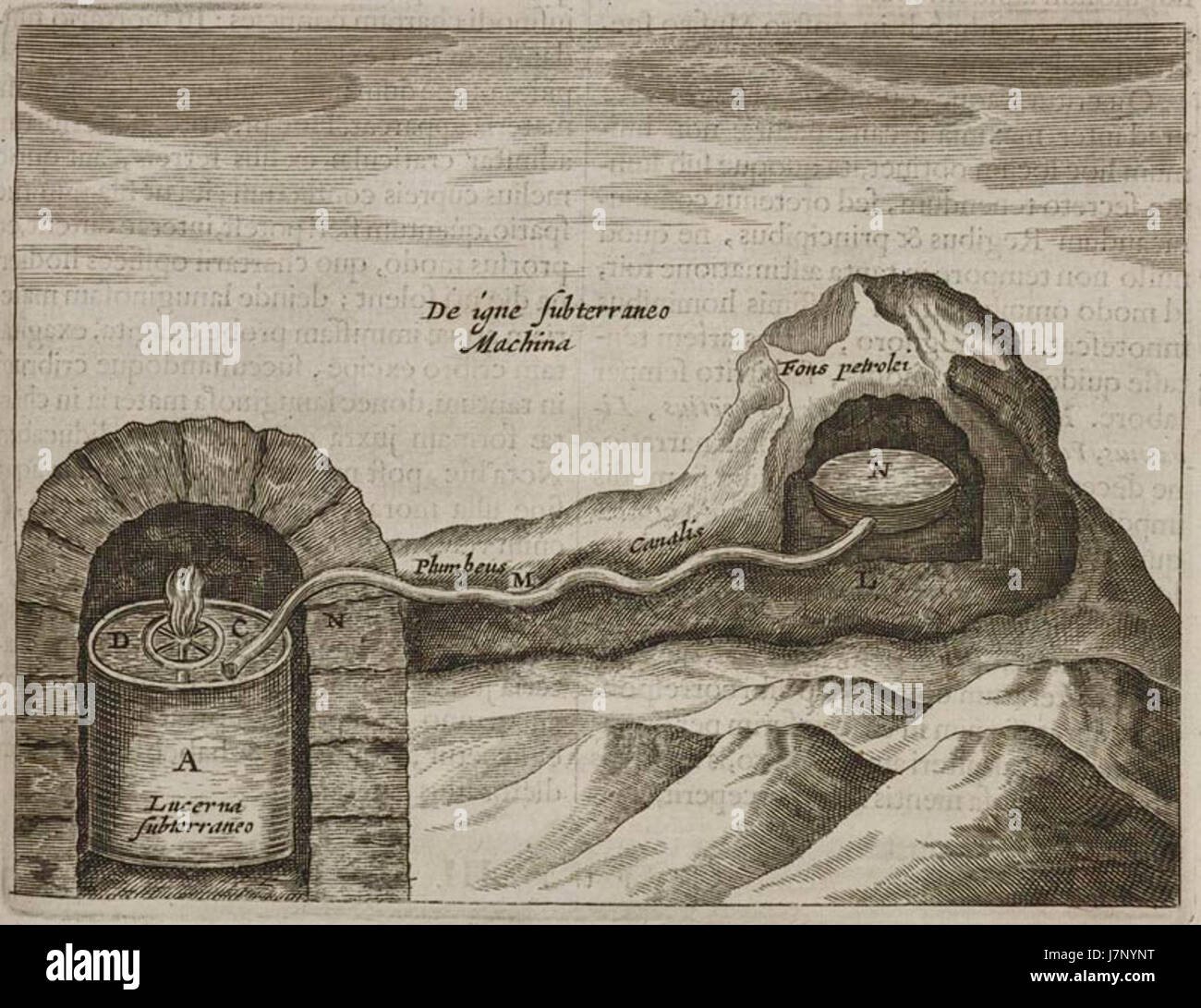
Athanasius Kircher Mundus subterraneus (1665) BL 505.ee.4 6 Stock Photo Alamy
Kircher, Athanasius: Mundus subterraneus Angela Mayer-Deutsch Living reference work entry First Online: 08 November 2020 15 Accesses 3 Altmetric Zusammenfassung Auf seiner Forschungsreise durch Süditalien 1637/38 wurde Kircher Zeuge von Vulkanausbrüchen, Erd- und Seebeben.
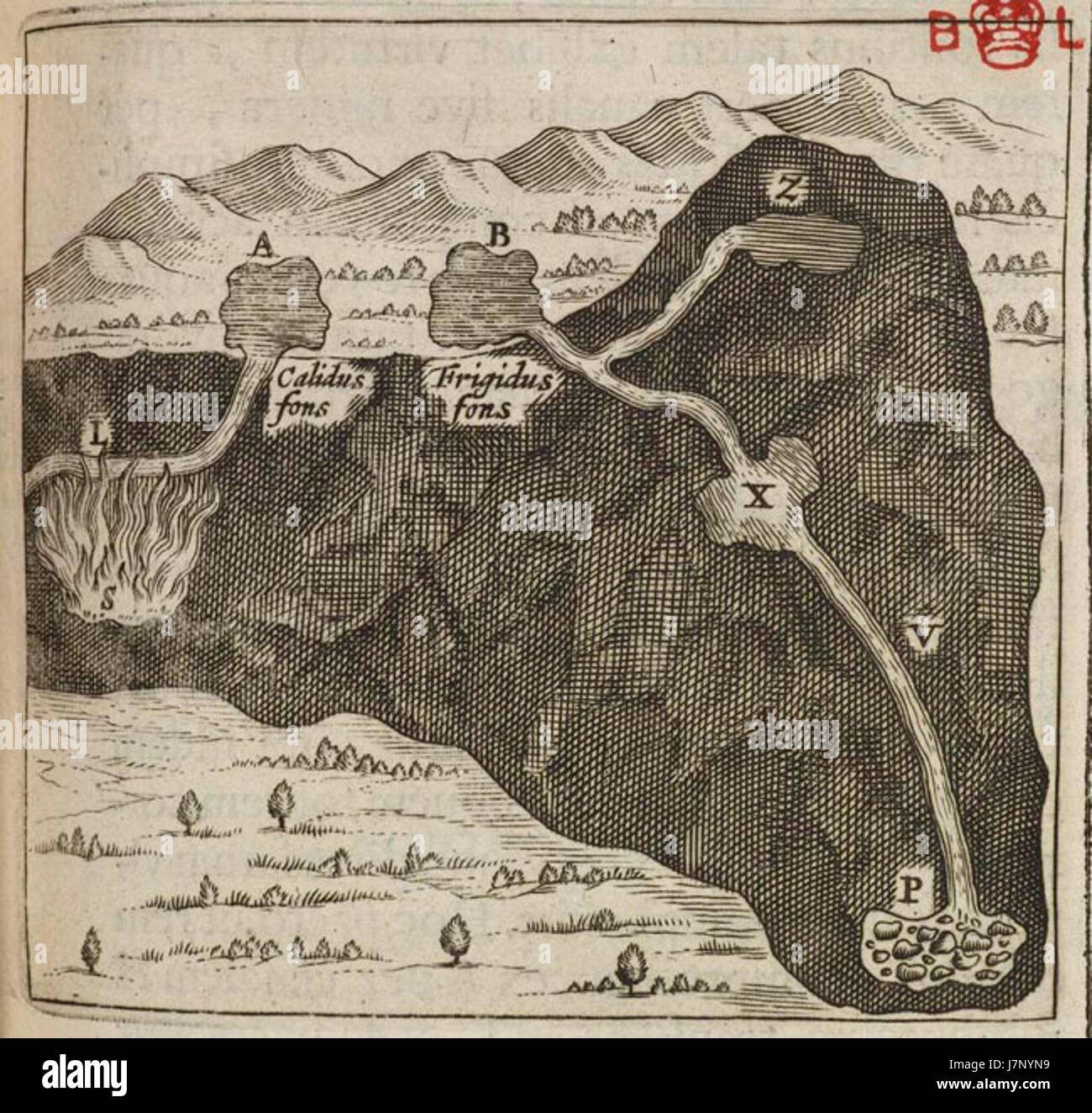
Athanasius Kircher Mundus subterraneus (1665) BL 505.ee.4 4 Stock Photo Alamy
Athanasius Kircher (2 May 1602 - 27 November 1680) [1] was a German Jesuit scholar and polymath who published around 40 major works of comparative religion, geology, and medicine.

Mundus subterraneus, in XII libros digestus . . . Two parts in one volume Athanasius KIRCHER
Athanasius Kircher (1602-1680), occupied the chair of mathematics at the Roman College and during his life he dedicated to search for a universal knowledge . He organized a museum which presented an image of universal science. His thirty two books cover a great variety of subjects.

Athanasius Kircher Mundus subterraneus (1665) BL 505.ee.4 5 Stock Photo Alamy
His masterwork, Mundus Subterraneus, is a spectacular work about the entrails of our planet: a two-volume book of encyclopedic proportions that presents "before the eyes of the curious reader all that is rare, exotic, and portentous, contained in the fecund womb of Nature.". Under the premise that there is an "idea of the earthly sphere.

Athanasius Kircher, Mundus Subterraneus, 16641665 Alchemy art, Vintage illustration
Athanasius Kircher (born May 2, 1601, Geisa, Abbacy of Fulda [Thuringia, Germany]—died November 27, 1680, Rome [Italy]) Jesuit priest and scholar, sometimes called the last Renaissance man, important for his prodigious activity in disseminating knowledge.

Agosto Foundation Mundus Subterraneus
Athanasius Kircher, Mundus Subterraneus. Mount Vesuvius in full eruption. Courtesy, Herzog August Bibliothek, Wolfenbuttel, Germany. the outbreak is taken up much later in book 4. There, Mons JE,tna is re-produced in a similar vein (fig. 2).7 I have furnished further proof of the key position of Kircher's exposure to the power of the subterranean

Athanasius Kircher Mundus subterraneus (1665) BL 505.ee.4 3 Stock Photo Alamy
Arthur PALMER, Professor Emeritus | Cited by 4,307 | | Read 77 publications | Contact Arthur PALMER

Athanasius Kircher, Mundus Subterraneus Senses Atlas
Athanasius Kircher, Mundus subterraneus (1665). ( Gallery; cf. two-page spreads .) The range of interests displayed by Athanasius Kircher (1602-1680) is staggering, even in a century renowned for universal scholarship. Despite failed attempts to decipher Egyptian hieroglyphics, he was a master of a dozen European and Oriental languages.

Athanasius Kircher, Mundus Subterraneus Shape Of The Universe, Occult Symbols, Lovecraftian, Old
A first edition work, with two volumes bound in one folio, by Athanasius Kircher (1602-1680), a German Jesuit scholar who published many extensive works on scientific, religious, and other subjects. Dubbed the "Master of a Hundred Arts," Kircher's interests were vast; his life's work included studies of Egyptology, Sinology, geology, technology, and microscopy.
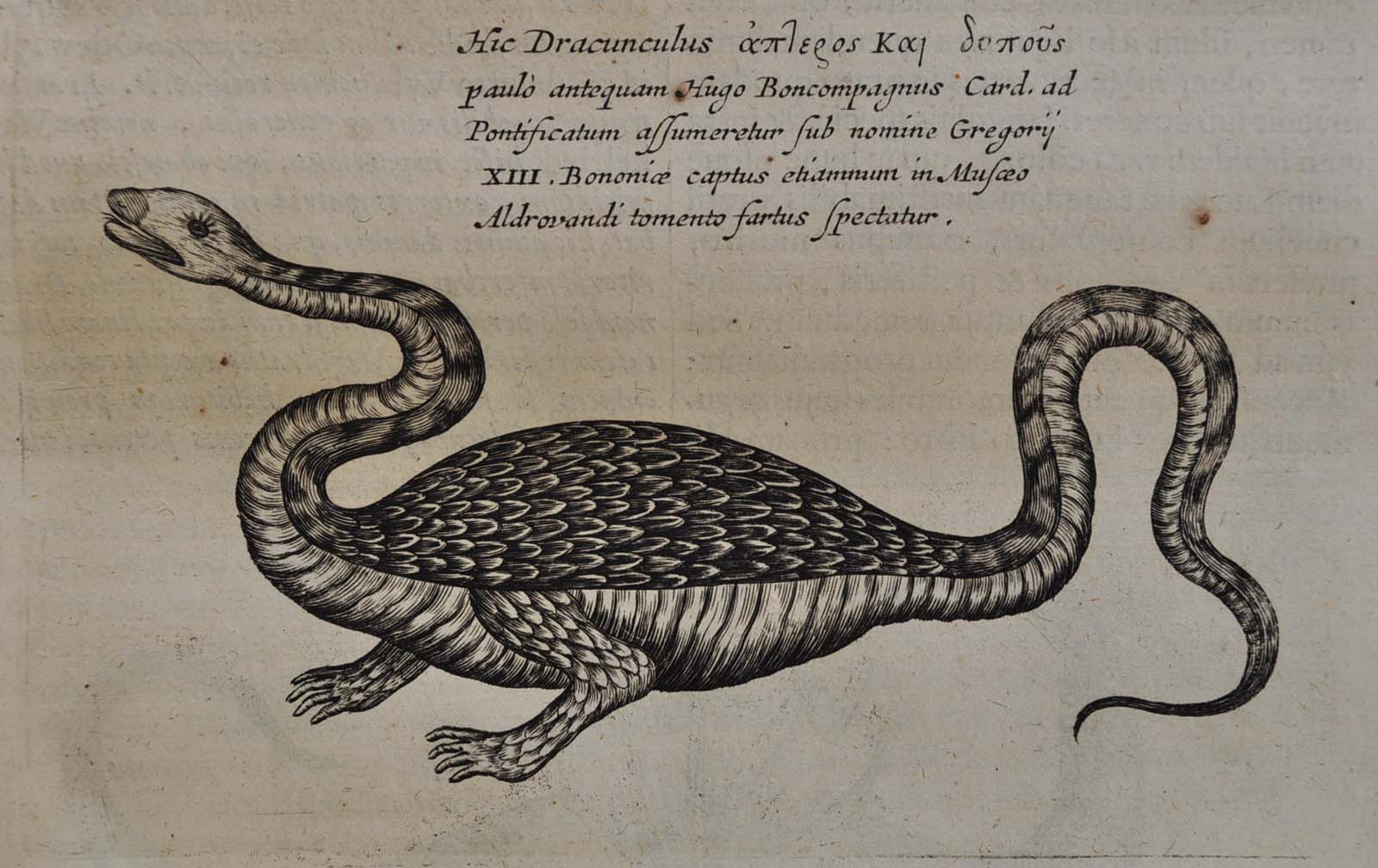
Mundus subterraneus, in XII libros digestus Athanasius Kircher First Edition
Mundus subterraneus, quo universae denique naturae divitiae (very roughly "The subterranean world, all its riches" [1]) is a scientific textbook written by Athanasius Kircher, and published in 1665. The work depicts Earth's geography through textual description, as well as lavish illustrations. [2] Title page

Athanasius Kircher Biography, Facts, & Contributions Britannica
English Extended title: The vulcano's: or, Burning and fire-vomiting mountains : famous in the world: vvith their remarkables. Collected for the most part out of Kircher's Subterraneous world; and expos'd to more general view in English, upon the relation of the late wonderful and prodigious eruptions of Aetna.

Mundus subterraneus, in XII libros digestus . . . Two parts in one volume Athanasius KIRCHER
Athanasius Kircher, a Jesuit professor of mathematics at the Roman College (Rome) in the middle of the seventeenth century who was interested in a great diversity of subjects, such as the universal knowledge, language, Egyptian hieroglyphs, the interior of the Earth, alchemy, cosmology, magnetism, and light and sound, still attracts today great interest.
Mundus Subterraneus by Athanasius Kircher geology
Figure 1. Portrait of Athanasius Kircher (1602-1680) by Cornelius Bloemart (1603-1680) from the 1664 edition of Mundus Subterraneus. to modern readers, and some of his conclusions are fl atly in- correct. However, conventional accounts of the progression of earth science rarely take into account contributions of men such as Kircher.

Athanasius Kircher. Mundus Subterraneus 1699.
Other articles where Mundus Subterraneus is discussed: Earth sciences: The rise of subterranean water:.philosopher Athanasius Kircher, in his Mundus subterraneus (1664; "Subterranean World"), suggested that the tides pump seawater through hidden channels to points of outlet at springs. To explain the rise of subterranean water beneath mountains, the chemist Robert Plot appealed to the.
.jpg)
KIRCHER, Athanasius (160280). Mundus Subterraneus. Amsterdam Joannes Jansson and Elizeus
Athanasius Kircher was a 17th century jesuit scholar. Polymath and extremely prolific, he published 39 major and highly influential works. They explore diverse and varied themes such as geography, astronomy, music, mathematics, archeology, medicine.
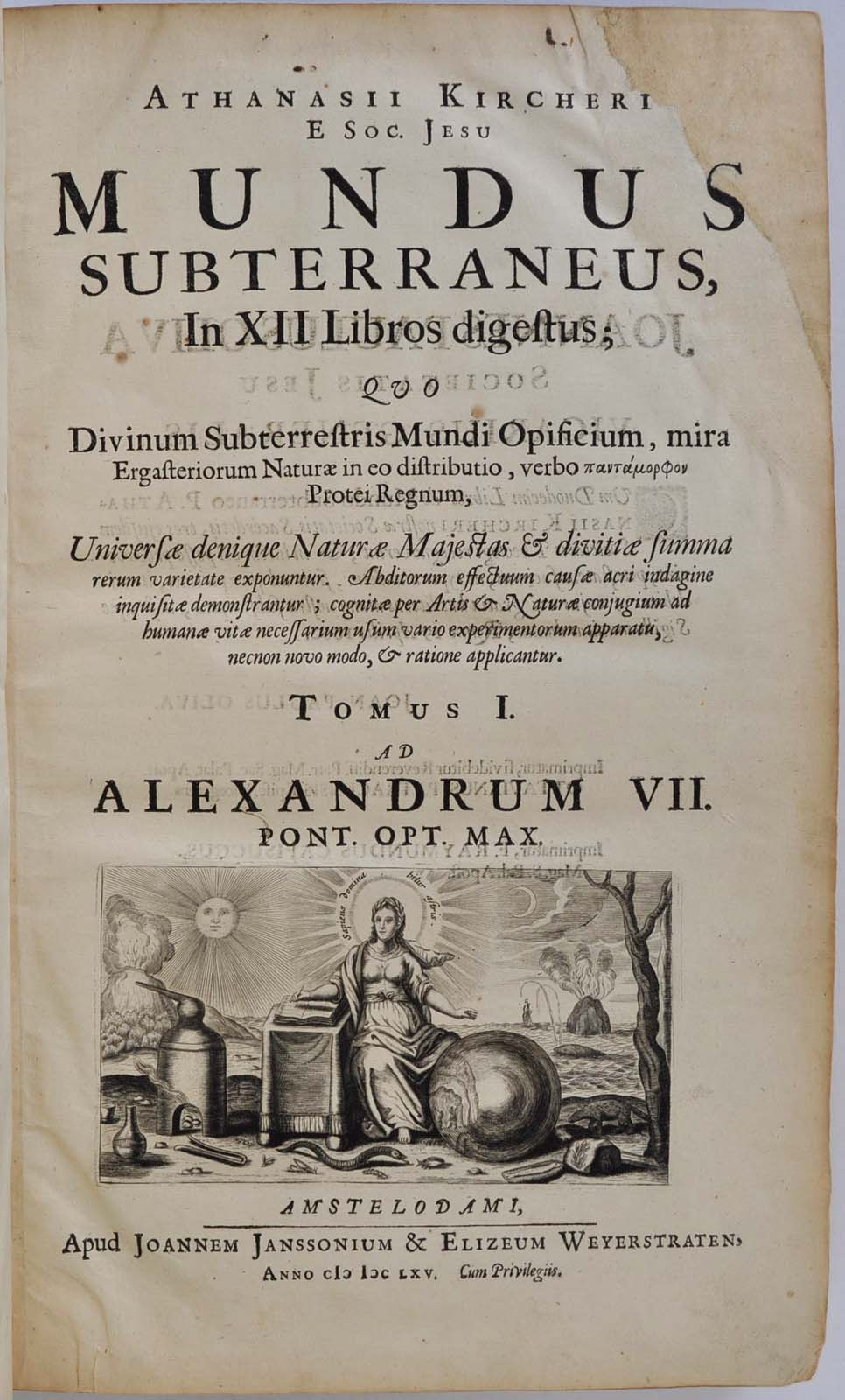
Mundus subterraneus, in XII libros digestus Athanasius Kircher First Edition
This publication on the geography of the earth was the first of several books that German Jesuit Athanasius Kircher (1602-1680) had printed in Amsterdam in order to avoid Roman censorship. In this spectacular publication, he combined ancient and medieval natural philosophy with observations of his own.